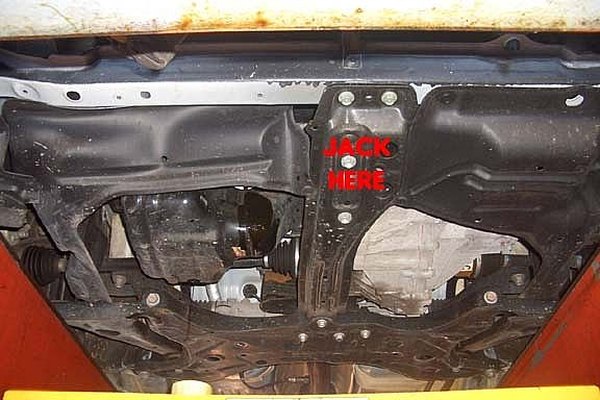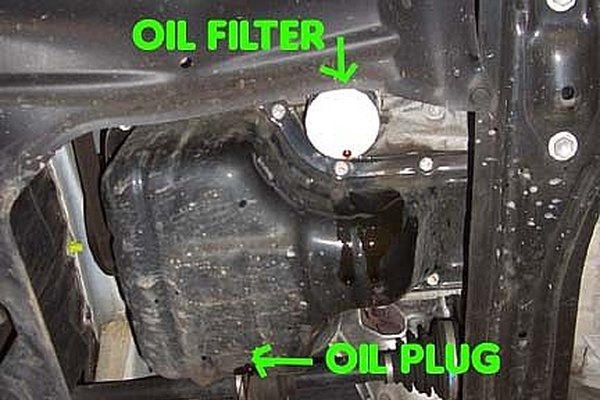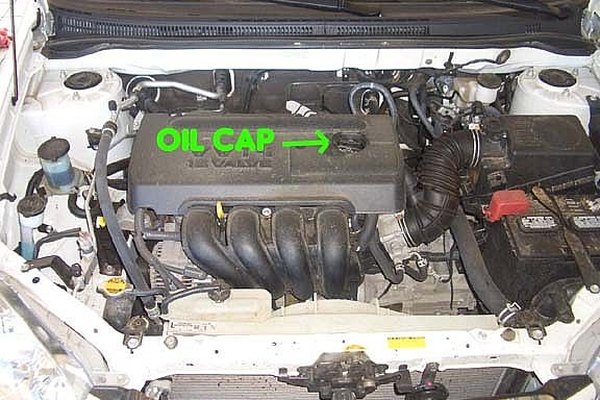How to Change Oil in a 2009 Toyota Corolla
by Editorial TeamUpdated November 07, 2017
Items you will need
A jack
jackstands
a metric wrench set
A drainpan to catch the oil in
A band wrench/ oil filter wrench
New oil!
A new oil filter
How to do a full service oil change
Get everything BEFORE you start! A jack to lift the car up ( you could just use the one that came with your car-it should be by the spare tire), jackstands to support it (safety first!), new oil (for this car you'll need 4.4 quarts of 5/30 weight oil), a set of metric wrenches ( I believe for this car it's a 14mm drain plug), a new oil filter (go to a parts store and tell then your car's info), a filter wrench (once you know the size of the filter find the band wrench that fits (get both at the same time), and a drainpan. If you want to do a full service oil change, also get a small bottle of DOT 4 brake fluid, washer fluid, transmission fluid, coolant (premixed), and maybe an air filter. This stuff will cost a bit of money, but if you're changing your own oil, you'll need it all again every 3,000 miles anyway :)

Jack up the car. Look under the front of the car for a metal frame piece. Make sure you don't jack it up on anything that will bend. The front center of the car should have a place to jack. Check your owner's manual if you're not sure, it will show jacking points. Jack it up slowly, and once it's high enough to get under it put the jackstands behind the front wheels on the car's frame. Slowly!!! lower the jack. The car should be supported on the jackstands. Now, look under the hood. Find the cap that says oil. Take it off.

Take out the drain plug. On cars, looking straight at a bolt, clockwise tightens and counter clockwise loosens (lefty-loosey, righty-tighty). It will be on a large curved piece of metal (your oilpan) and will be about the lowest point on the engine. Take the bolt all the way out. Have your drainpan under it so when the oil comes out you don't make a mess.

After the oil is down to a drip, put the plug back in and tighten it. Don't crank it way down! Once it gets snug, tighten it enough that it is tight. Now move the drainpan and find the oil filter. It should be near the passenger side tire. It looks like a small pop can. Use the filter wrench to loosen it and take it all the way off. Again catch the oil in the drainpan. Look at the top of the old oil filter! It should have a black rubber ring on it. If it doesn't, look at the engine where the oil filter came off and make sure the ring isn't still there! Important! After a little more oil drains out of the oil filter hole, take your new filter, dip your finger in the NEW oil, and wipe some on the rubber ring. Then put the new filter on. Don't over tighten it! Spin it on until it gets snug, then tighten it about one half to one more turn.

Now go back to the hood of the car and add your new oil. For the Toyota, use 4 full quarts, then just under half a quart for 4.4 quarts. Then put the oil cap back on. Make sure to put the oil in before you start the car!!! Next, pressure test the car. Make sure you have the drain plug in, the filter on, and the oil cap on. Start the car. Look underneath (carefully!) and make sure no oil is leaking. Watch for about ten seconds. Or, you can use your dashboard. It should have either an oil pressure gauge or an oil light. Wait until the gauge moves up to about halfway, or until the oil light goes off, then look for any leaks. If there are leaks, shut the car off right away and retighten the leaking piece. If no leaks, use the jack to lift up the car until you can get the jackstand out, then SLOWLY lower it back down to the ground. Now check the oil dipstick to make sure the car is to the full mark. And you're done with the oil change!

If you want to do a full service oil change, just check all your fluids under the hood after you change the oil. Everything should have full marks. If it's not full just fill it with the right fluid. Then check your air filter, and check your tire pressure. Please rate this article as to how helpful it is!
Writer Bio
This article was written by the CareerTrend team, copy edited and fact checked through a multi-point auditing system, in efforts to ensure our readers only receive the best information. To submit your questions or ideas, or to simply learn more about CareerTrend, contact us [here](http://careertrend.com/about-us).



